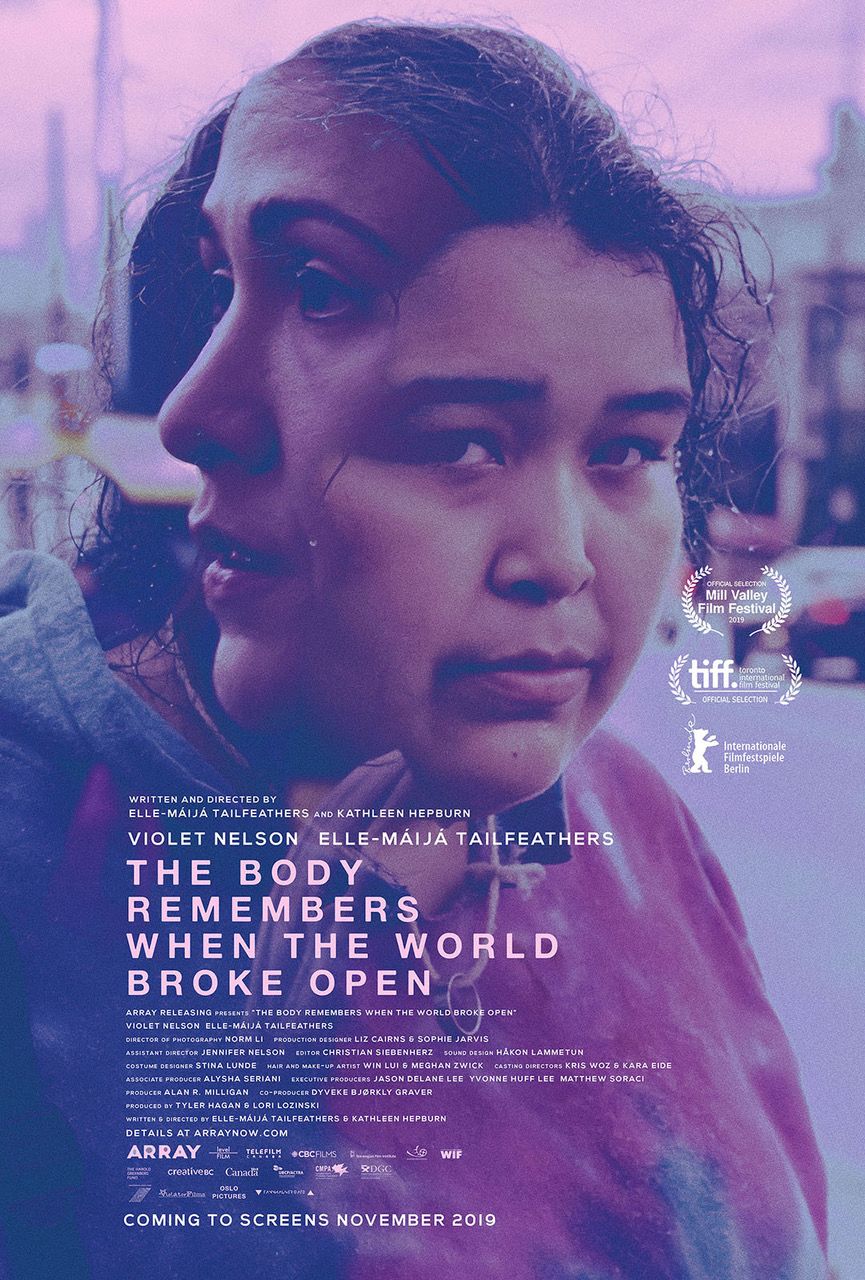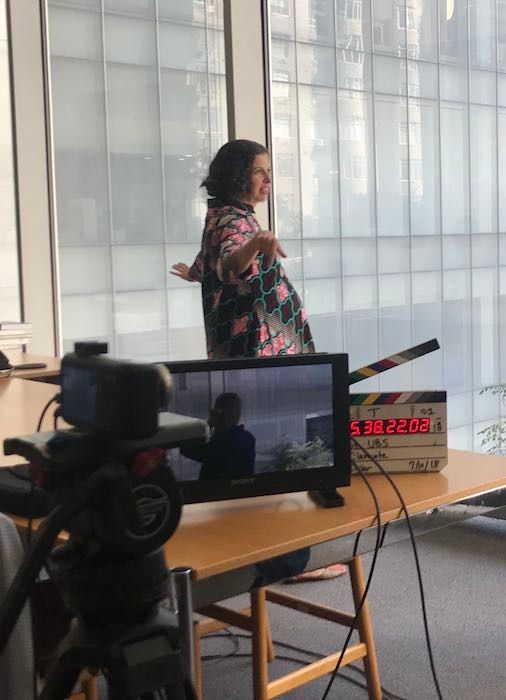Co-writer/director Elle-Máijá Tailfeathers based The Body Remembers When the World Broke Open on a “moving collision” she had a few years ago with a complete stranger in East Vancouver. As it plays out in the film, an Indigenous woman named Áila (portrayed by Tailfeathers, who's of Blackfoot and Sami descent) finds herself face to face in the pouring rain with Rosie (portrayed by newcomer Violet Nelson, a member of the Kwakwaka’wakw First Nation), a young pregnant woman who had just escaped an abusive boyfriend.
Contained within a part of an afternoon, over the course of almost two hours, the audience witnesses the brief yet life-changing moments that follow as Alia attempts to get Rosie to safety. The film is contemplative and careful, marked by delicate performances that clearly come from something deeper than the page. And intentionally so.
When Tailfeathers and co-writer/director Kathleen Hepburn decided to tell the story of a known epidemic in Canada—violence against Indigenous women—they knew they couldn’t just turn truth into entertainment for its own sake. It was an opportunity to affect change and create sustainability within the Indigenous community. Not only did they take deliberate steps to honor the subject matter, they extended that care to the crew. Finding it challenging to staff their crew entirely with Indigenous people, Hepburn and Tailfeathers partnered with TELUS STORYHIVE and decided to turn their production into a paid youth mentorship program, pairing key crew with Indigenous mentees.
To say that the film's existence is remarkable would be an understatement. The film has made waves throughout the international film community and Ava Duvernay’s ARRAY will release the film on Netflix on November 27. Here, Tailfeathers, Hepburn, and Nelson discuss the quiet revolution that is The Body Remembers When the World Broke Open.
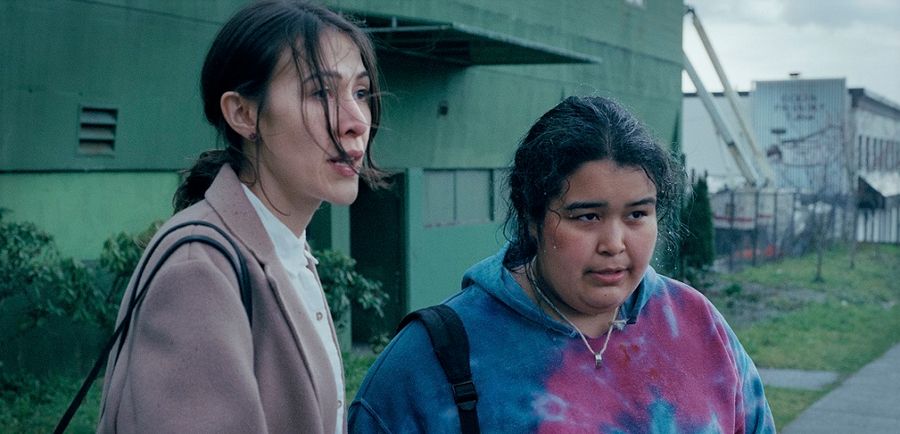
Why did you want to tell this particular story?
Elle-Máijá Tailfeathers: As an Indigenous woman, I believe that our stories matter and they do deserve space on screen. We're at a really interesting time, especially for Indigenous cinema, wherein there are suddenly more resources than we've had before to be able to tell our stories and that's because Indigenous filmmakers have had to fight for that. So, it's wonderful to finally have the support to be able to make the kind of films we want to make.
Kathleen Hepburn: Violence against Indigenous women is an epidemic in Canada. This story is very timely because of that as well.
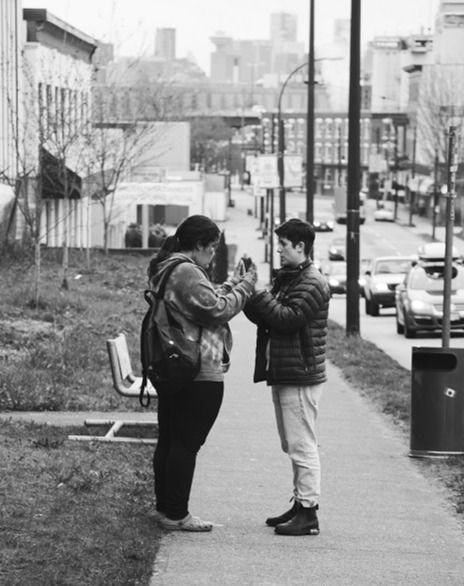
"With Indigenous film and representations of Indigenous people, there's so often this narrative of trauma or victimhood . . . We wanted to challenge those narratives and bring something deeper and something rooted in love and strength and beauty."
—Elle-Máijá
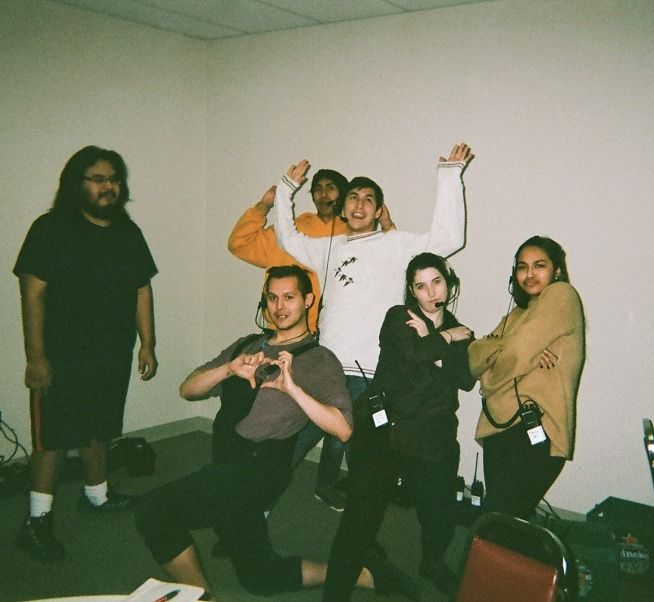
You created a youth mentorship program to develop and make the film, which is so remarkable. Can you talk about how it factored into the development and production process?
Máijá: There were quite a few reasons why we engaged with Indigenous youth. The most obvious is that the character of Rosie is this young Indigenous person who's been through foster care and is living in a very complicated reality. I have not experienced that, and we wanted to honor Rosie's story in the most authentic way possible. That meant that we needed to include the voices of young Indigenous women with similar experiences. Often, films that feature content about marginalized people have a very extractive history in terms of telling these stories. It's often filmmakers who do not come from those communities benefiting from telling them and never really giving back. So we wanted to approach this from a very different way of making film: we wanted to honor the strength and beauty and kinship of Indigenous communities.
Early on we decided to do a script workshop with young Indigenous women, so we brought in six Indigenous women who had had similar experiences to Rosie and workshopped the script with them. That led us into the production stage. We wanted to hire as many Indigenous crew as possible and encountered this issue where there aren't enough Indigenous people working in these key crew positions. So we wanted to help build capacity and sustainability within the community, which led to this other project.
Kathleen: We decided to have 11 Indigenous youth partnered with each key creative. We had a directing mentee, cinematographer mentee—all the way down to makeup and wardrobe. The goal was to create not just a training model, but more of a level playing field between the two partners so that the mentees could feel like they were participating in the creative, contributing to the film, and also getting something out of the experience. It ended up being a really incredible process, and allowed us to rethink the whole way that film crews operate in terms of not being as militaristic or hierarchical. Obviously as a settler, I also had a lot to learn, too. I still do. But, the key was trying to keep the heart of the film at the forefront of our thoughts and making sure that we were protecting the vision of the film and the people we were working with.
Máijá: A concern that we needed to address early on was that a lot of the crew working on this film (that is so specific to Indigenous women’s experience) were settlers—or white people. Knowing that we'd be bringing Indigenous youth onto our crew, it was critical that we took care of our youth and made sure that we weren't bringing them into a harmful environment where some of our crew might replicate these awful relationships that can exist with settlers and Indigenous people in Canada. We did a cultural competency training that was mandatory for the whole crew before launching into production. It set the grounds for a relationship of respect and mutual understanding. We needed to continually honor that this is an important story that's rooted in real experiences throughout our working relationship as a production.
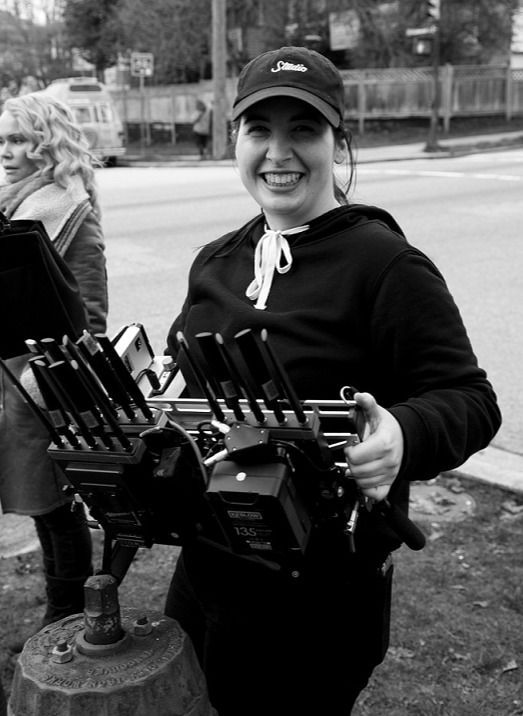
How did you find the youth and emerging filmmakers to work with?
Kathleen: We did an open call to communities. Unfortunately, we couldn't afford to bring people in [from far away] so it was mostly local youth. But, we had about 75 applicants for 11 slots, and they were all amazing.
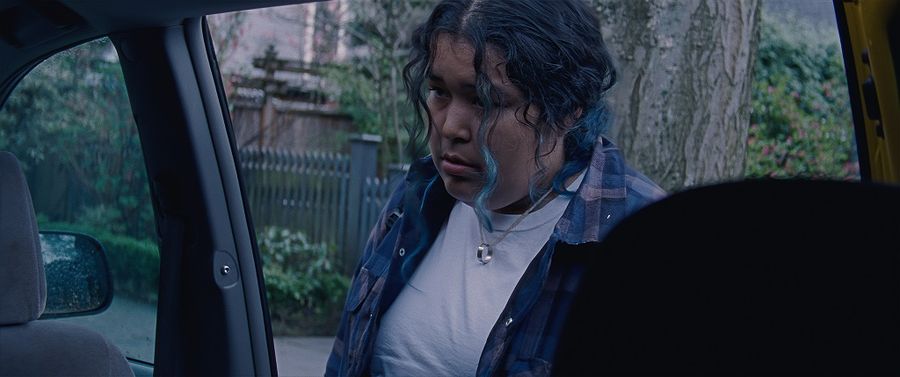
Violet, this is a personal story for you, too. Can you talk about the experiences you brought to the film and how the production environment supported you through the process of acting?
Violet Nelson: My mom was in an abusive relationship and I witnessed that a lot. She's no longer in the relationship, but that helped me understand Rosie more and to connect with her more. And when I was little, I was in foster care for a little bit. That also gave me another understanding of how scared and alone [Rosie] could feel. [Rosie] doesn't want her baby to go through what she went through.
[The directors] brought an elder on set and we found out that she's from the same territory as me. After we were done with takes, I would be able to talk to her. She helped me make sure that I didn't bring [negative] energy home and that [playing Rosie] doesn't affect me badly. I also went to a counselor once a week, and that was really helpful.How did Violet’s personal connection to the story change your approach to telling it?
Máijá: We did a conventional casting call looking for formally trained actors, but weren't getting the spirit of Rosie from them. So we had an open casting call hoping to find a young woman who had some sort of lived experience [that connects with the film]. But we hadn't thought about the implications of casting someone [with a connection to the story]. When we did cast Violet, we came to this realization that we needed to experiment with the way we approached the film.
We needed to create an environment that was nurturing of her. If she wanted to walk away from this project, she could have. Kathleen and I actually saw a counselor to learn about trauma-informed care. We learned tools for dealing with difficult moments so that we could work with Violet in a supportive way.
Kathleen: Violet's mom was also really helpful in making sure that everyone was okay. We’re grateful that she was so open about how her experiences made her proud of who she is today.
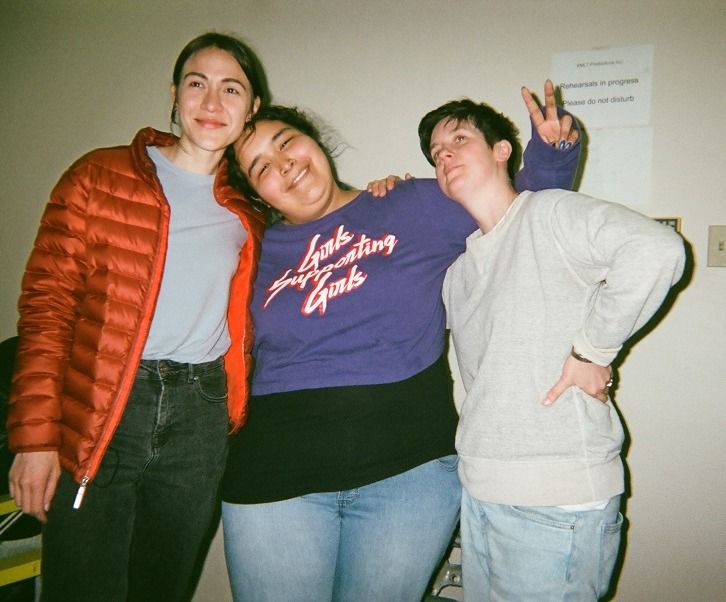
Considering your approach and mission with the film, what do you think of filmmaking as a form of activism?
Kathleen: In terms of the process, it was an active resistance to make the film in the way that we did. People get trained in film school, and in the industry, there's a right way to do things: certain people have the power and everyone else shows up and stays in their lane. But we subverted that by showing the youth we were working with that it doesn't have to be that way and that you can create your own process. Some of them have taken that [mentality] on to their own projects and work together. And I think that that is a form of activism.
Were there any challenges you faced with funding because of how you chose to subvert traditional film production expectations?
Máijá: It was surprisingly easy. In Canada, there's been a long history of activism within the film community to advocate for change, to advocate for real representation, and to advocate for Indigenous people who tell their own stories. Because of all of that work from these previous generations of filmmakers, we are now at a time where funding bodies in Canada are forced to listen and to learn from us and understand that we deserve the same resources that settler filmmakers—often white men—receive.
Kathleen: We were one of the first films that the Indigenous Screen Office supported, which is a new branch of Telefilm Canada, Canada’s funding body.
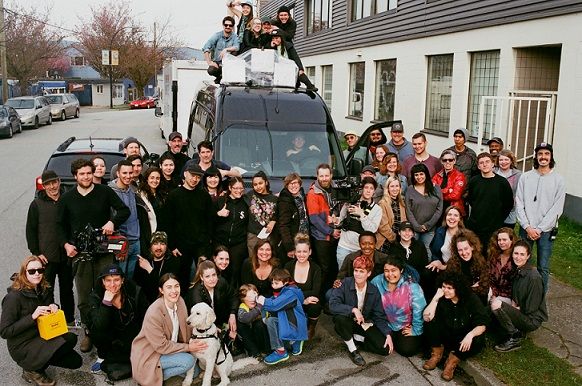

How do you channel generational trauma and anger into art and an elixir?
Máijá: Well, I did it with Kathleen. With Indigenous film and representations of Indigenous people, there's so often this narrative of trauma or victimhood and that can be really tough on actors and audiences. With this, we wanted to challenge those narratives and bring something deeper and something rooted in love and strength and beauty. We're so much more than our trauma. Those aren't the people I know. There's such a richness and beauty to our communities. With this film, we wanted to be able to honor that. Just the beauty of Indigenous women and the way that they uphold our communities, especially Indigenous mothers.
I know so many Indigenous women who work acts of magic on a daily basis. Particularly with Rosie's character, she is the product of generations of intentional fracturing of our communities from the Canadian state. We wanted to do our best to uplift the love between Rosie and this baby growing inside of her, and the fact that this young woman deserves to be a mother. We all know that in Canada, young Indigenous women are having their children taken away at alarming rates into foster care. It was really important for us to be able to challenge that system.
For more resources for Indigenous filmmakers in Canada, check out ImagineNATIVE and the Indigenous Screen Office.
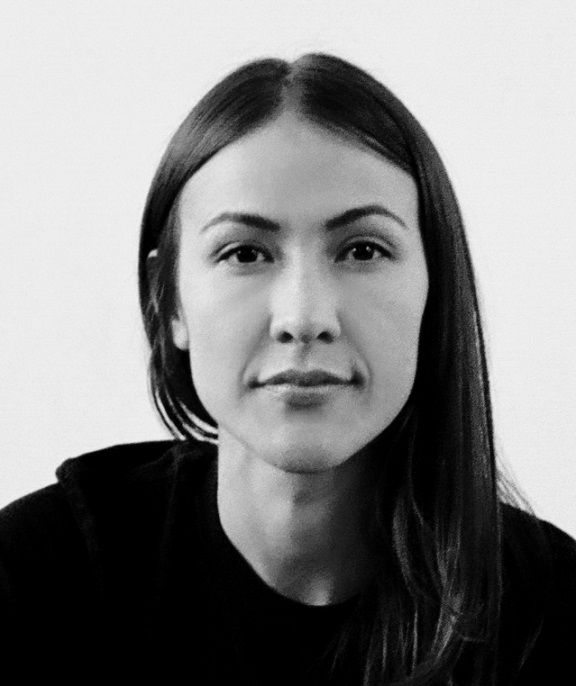
Elle-Máijá Tailfeathers
Elle-Máijá Tailfeathers is a filmmaker, writer, and actor based in Vancouver, British Columbia. She is Blackfoot from the Kainai First Nation (Blood Reserve) as well as Sámi from northern Norway. She holds a bachelor’s degree from the University of British Columbia in Indigenous Studies with a Minor in Women's and Gender Studies. THE BODY REMEMBERS WHEN THE WORLD BROKE OPEN is her debut narrative feature.
Tailfeathers was the 2018 Sundance Institute Merata Mita Film Fellow and is an alumni of the Berlinale Talent Lab, the Hot Docs Accelerator Lab, the CFC/NFB/Ford Foundation Open Immersion Virtual Reality Lab, the Whistler Film Festival Aboriginal Film Fellowship, and the International Sámi Film Institute Indigenous Film Fellowship. Her short documentary, Bihttoš, was included in the TIFF Top Ten Canadian Shorts and was also nominated for a Canadian Screen Award and a Leo Award for Best Short Documentary. Tailfeathers received a Canadian Screen Award, a UBCP/ACTRA VWIFF Award, and was nominated for a Leo Award and an American Indian Motion Picture Award for her performance in On the Farm. In 2017 she directed and produced the feature-length documentary, cəsnaʔəm, ̓ the city before the city, in partnership and collaboration with the Musqueam First Nation. She is currently directing a feature-length documentary about the opiate crisis in her home community of Kainai with the support of the National Film Board of Canada as well as the Hot Docs Cross Currents Fund. She will also appear onscreen in Jeff Barnaby’s Blood Quantum slated for release in 2019.
Kathleen Hepburn
Kathleen Hepburn is a Vancouver born writer and director whose debut feature, NEVER STEADY, NEVER STILL, which Variety Magazine calls a "stoically broken hearted debut," premiered at the Toronto International Film Festival in 2017 and was awarded Best Canadian Film and Best Director by the Vancouver Film Critics Circle, as well as Special Jury Prize at the Dublin International Film Festival. It went on to be nominated for eight Canadian Screen Academy Awards including Best Picture. She holds an MFA in Creative Writing, and a BFA in Film Production from the Universities of Guelph and Simon Fraser respectively. THE BODY REMEMBERS WHEN THE WORLD BROKE OPEN is her sophomore feature, co-written and co- directed by Elle-Máijá Tailfeathers.


